《E.C.ANTI-DUMPING LAW AND PRACTICE》
| 作者 | 编者 |
|---|---|
| 出版 | SWEET & MAXWELL |
| 参考页数 | 687 |
| 出版时间 | 1996(求助前请核对) 目录预览 |
| ISBN号 | 0421561505 — 求助条款 |
| PDF编号 | 812083918(仅供预览,未存储实际文件) |
| 求助格式 | 扫描PDF(若分多册发行,每次仅能受理1册) |
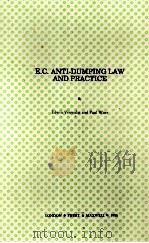
CHAPTER 1: GENERAL INTRODUCTION1
Introduction1
1.1The international framework3
1.2 The European Communities5
1.3 Outline of this book6
PART 1: PROCEDURE13
CHAPTER 2: INVESTIGATORY PROCEDURES13
Introduction13
2.1The administering authorities13
2.1.1The Commission13
Directorate-General I14
The Legal Service14
Directorate-General Ⅲ15
Directorate-General Ⅳ15
Directorate-General ⅩⅩⅠ15
2.1.2 The Advisory Committee15
2.1.3 The Council of Ministers16
2.1.4 The European Parliament18
2.1.5 Schematic overview of the decision-making structure in anti-dumping investigations18
2.1.6 Time limits20
2.2Complaint and initiation21
2.2.1 Standing21
2.2.2 Confidentiality of the complaint24
2.2.3 Non-confidential version of the complaint25
2.2.4 Selectivity of the complaint25
2.2.5 Withdrawal of the complaint26
2.2.6 Rejection of the complaint27
2.2.7 Initiation28
2.2.8 Self-initiation29
2.2.9 Proceeding vs.investigation30
2.3Investigation techniques30
2.3.1 Interested parties30
2.3.2Questionnaires31
Non-confidential version of the questionnaire response32
Deadline for the questionnaire response32
Related parties33
2.3.3Investigation periods34
Developments after the investigation period36
2.3.4Verifications38
Verification reports39
2.3.5 Best information available [BIA]40
2.3.6Procedural safeguards41
Confidentiality of information42
Access to the file and possibility to comment44
Hearings45
Confrontation meetings46
Explanation of essential facts and considerations; pre- disclosure, provisional disclosure and final disclosure46
2.3.7 Sampling of producers47
CHAPTER 3: PROTECTIVE ACTION/TERMINATION67
Introduction67
3.1Undertakings67
3.1.1 General67
3.1.2 Refusal to accept undertakings69
3.1.3 Main contents of price undertakings70
3.1.4 Quantitative restrictions71
3.1.5 Other forms of export restraints72
3.1.6 Newcomers73
3.1.7 Violation of or withdrawal from undertakings74
3.2Anti-dumping duties76
3.2.1 General76
3.2.2 Scope; product definition; product exclusion77
3.2.3 Country of origin, production or export?/transshipments79
3.2.4 Lesser duty rule; injury margins82
3.2.5 Non-discriminatory application of anti-dumping duties83
3.2.6 Cumulation anti-dumping and countervailing duties84
3.2.7 Cumulation anti-dumping duties and quantitative restrictions86
3.2.8 Form of the duty87
3.2.9Residual duty89
Non-co-operating producers91
Newcomers91
Trading houses91
3.2.10 Collection of anti-dumping duties93
3.2.11 Inward processing93
3.2.12 Correction clerical errors/amendments93
3.2.13 Product exclusion after publication94
3.2.14 Provisional anti-dumping duties96
3.2.15 Definitive anti-dumping duties97
3.2.16 Definitive collection of provisional duties97
3.2.17 Retro-active application of anti-dumping duties99
3.3 Termination without protective measures100
CHAPTER 4: ADMINISTRATIVE REVIEW/REFUNDS/SUSPENSION123
4.1Review possibilities123
4.1.1Interim review124
Procedure124
Commission practice125
Scope of review126
4.1.2 Newcomer review127
4.1.3Expiry review129
Procedure129
Commission practice130
4.2Refunds131
4.2.1 Procedure132
4.2.2 Commission practice133
4.3 Suspension of anti-dumping measures138
CHAPTER 5: JUDICIAL REVIEW149
Introduction149
5.1Article 173(2) E.C.Treary149
5.1.1 Decision addressed to the applicant150
5.1.2Decision which although in the form of a Regulation is of direct and individual concern to the Applicant152
Decision by its very nature rather than a Regulation152
Direct concern155
Individual concern156
5.2Article 177 E.C.Treaty156
5.3 Article 175(3) E.C.Treaty157
5.4 Article 178 jo.215(2) E.C.Treaty157
5.5 Article 185 E.C.Treaty158
5.6 The scope of review159
5.7 The Court of First Instance160
5.8 Conclusions160
PART 2: SUBSTANTIVE REQUIREMENTS169
CHAPTER 6: THE DUMPING DETERMINATION169
Introduction169
6.1Export Price170
6.1.1 Middlemen/trading houses171
6.1.2Construction of the export price172
When will the export price be constructed?172
Which costs will be deducted?174
Which profit will be deducted?175
6.2Normal value177
6.2.1Home market sales177
Five percent rule177
Price paid or payable178
Ordinary course of trade178
Related parties179
Selective normal value; exclusion of certain domestic sales channels183
Compensatory arrangements185
Like product185
Exporting country or country of origin185
Normal value for middlemen/trading houses185
6.2.2No, insufficient or unreliable sales in the home market186
Third country exports186
Constructed value187
Cost of manufacture189
Selling, general administrative expenses [SGA]192
Profit193
6.2.3Sales below cost of production197
Conditions197
Calculation of normal value198
6.2.4Imports from non-market economy countries199
Definition non-market economy country199
Calculation normal value200
The choice of the surrogate country200
Domestic prices, third country exports or constructed value?204
Overview of surrogate countries used205
Imposition of anti-dumping duties in the case of non-market economy countries; one country/one duty rule205
6.2.5Country of origin, production or export?/transshipments208
Applicable WTO/GATT and E.C.law208
Commission practice210
6.3Adjustments (netting back)211
6.3.1 Physical characteristics213
6.3.2 Import charges and indirect taxes215
6.3.3 Discounts, rebates and quantities216
6.3.4Level of trade/symmetry219
Selective normal value225
Original equipment manufacturer [OEM] sales225
Identification of OEM sales225
OEM normal value227
OEM export price227
6.3.5 Transport, insurance, handling, loading and ancillary costs228
6.3.6 Packing228
6.3.7 Credit229
6.3.8 After-sales costs230
6.3.9 Commissions231
6.4The comparison231
6.4.1 Currency conversions233
6.4.2 Negative dumping234
6.4.3 Sale and date of sale236
6.5The dumping margin237
6.5.1 Examples of dumping margin calculations237
6.6 Sampling of types of products or transactions240
CHAPTER 7: THE INJURY DETERMINATION281
Introduction281
7.1The like product282
7.1.1 The “like product” determination282
7.1.2 Absence of ‘like product’ data288
7.2 The domestic industry289
7.2.1The standard situation289
Standing289
Integrated producers291
Production in the E.C.292
7.2.2 Regional industries296
7.2.3Conflicts of interest: related parties sensu lato297
Community producer/importer298
Related parties sensu stricto: producer/exporter300
7.3Injury301
7.3.1Cumulation301
Decumulation302
7.3.2Material injury sensu stricto308
Volume of dumped imports309
Prices of dumped imports310
Impact of dumped imports on the Community industry311
7.3.3 Threat of material injury313
7.3.4 Material retardation314
7.4Causation314
7.4.1 General314
7.4.2 Margins analysis317
7.4.3 Technical dumping318
7.4.4.Competition arguments319
CHAPTER 8: INJURY MARGINS343
Introduction343
8.1Outline344
8.2 The importance of injury margins344
8.3The Conventional techniques of calculating injury margins345
8.3.1 General assessments345
8.3.2 Price undercutting: price comparison345
8.3.3Underselling: target prices347
Which cost of production?349
Which profit?349
8.3.4Global, individual or semi-individual injury margins?351
Individual injury margins352
Global injury margins352
Semi-individual injury margins353
8.4Two special cases353
8.4.1 Compact disc players354
8.4.2 Audio tapes in cassettes355
8.5 Conclusions and recommendations358
CHAPTER 9: COMMUNITY INTEREST369
PART 3: DIVERSION AND ANTI-DIVERSION RULES379
CHAPTER 10: ANTI-CIRCUMVENTION MEASURES379
Introduction379
10.1The Article 13 anti-circumvention provisions379
10.1.1.Substantive requirements379
The general rule of Article 13 (1)379
Requirement 1: change in the pattern of trade380
Requirement 2: insufficient due cause or economic justification380
Burden of proof381
What is sufficient due cause of economic justification381
Requirement 3: undermining the remedial effects of the duty382
Requirement 4: evidence of dumping382
The specific rule of Article 13(2) for assembly operations383
Value-of-parts test383
Value-added test384
Are Article 13(1) and 13(2) mutually exclusive?385
10.1.2Procedure385
10.1.3 WTO-compatability of Article 13387
10.2Origin investigations389
10.2.1Procedure390
The official procedure390
The informal procedure392
Ruling requests/BOI393
Judicial review393
10.2.2 Substantive concepts394
10.2.3 Problematic product specic origin Regulations of the E.C.395
10.2.4Value-added calculation methods396
Older cases397
Roll-up test397
Tracing test397
Parts manufactured in-house398
Examples398
Recent cases: compact disc players and colour televisions399
Compact disc players399
Colour televisions400
Critical comments400
Transfer pricing400
Currency conversions; exchange rates401
Origin-conferring assembly: the Brother judgment402
10.2.5 The interpretation of the origin rules by the European Court of Justice404
10.2.6 The WTO Agreement on rules of origin408
10.3 Input dumping409
10.4 Slightly altered merchandise410
CHAPTER 11: ABSORPTION AND ANTI-ABSORPTION DUTIES421
11.1Procedure421
11.2 Commission practice422
CHAPTER 12: REGISTRATION PROCEDURE425
ANNEXES429
Annex 1:Basic Regulation429
Annex 2: WTO Anti-Dumping Agreement467
Annex 3: Overview of sunsetted anti-dumping proceedings from July 1, 1985 to December 31, 1995495
Annex 4: Commission decisions on refund applications499
Annex 5: Overview of surrogate countries used in non-market economy proceedings from January 1, 1980 to December 31, 1995503
Annex 6: Comparison dumping and injury margins in 34 Japanese proceedings507
Annex 7: Comparison dumping and injury margins in 53 Chinese proceedings515
Annex 8: The target profit margin in 34 Japanese proceedings521
Annex 9: The target profit margin in 53 Chinese proceedings523
Annex 10: List of administrative proceedings527
Annex 11: List of Court cases657
Bibliography665
Index679
1996《E.C.ANTI-DUMPING LAW AND PRACTICE》由于是年代较久的资料都绝版了,几乎不可能购买到实物。如果大家为了学习确实需要,可向博主求助其电子版PDF文件(由 1996 SWEET & MAXWELL 出版的版本) 。对合法合规的求助,我会当即受理并将下载地址发送给你。
高度相关资料
-
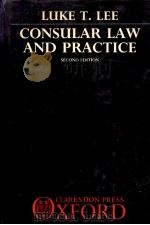
- Consular law and practice
- 1991 Clarendon Press ; New York : Oxford University Press
-
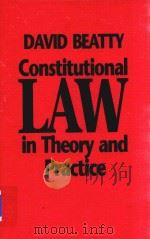
- Constitutional Law in Theory and Practice
- 1995 University of Toronto Press
-
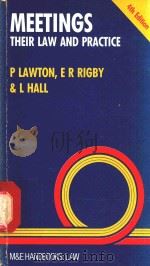
- MEETINGS THEIR LAW AND PRACTICE
- 1987 LONGMAN GROUP UK
-
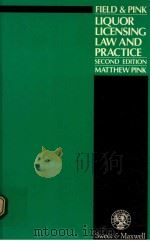
- FIELD AND PINK:LIQUOR LICENSING LAW AND PRACTICE
- 1991 SWEET AND MAXWELL
-
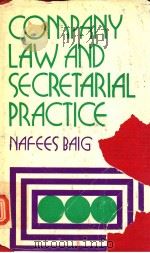
- COMPANY LAW AND SECETARIAL PRACTICE
- 1978 STERLING PUBLISHERS PTV.LTD.
-

- Immigration law and Practice
- 1996 Sweet & Maxwell
-
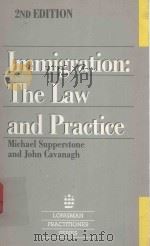
- IMMIGRATION:THE LAW AND PRACTICE
- 1983 LONGMAN
-
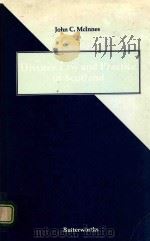
- DIVORCE LAW AND PRACTICE IN SCOTLAND
- 1990 EDINBURGH BUTTERWORTHS
-
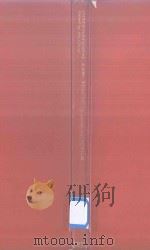
- International Law Teaching and Practice
- 1982 Stevens & Sons
-

- DOWNSIZING LAW AND PRACTICE PART II
- 1996 BNA BOOKS
-
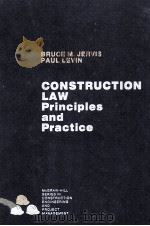
- CONSTRUCTION LAW PRINCIPLES AND PRACTICE
- 1988 MCGRAW-HILL BOOK COMPANY
-
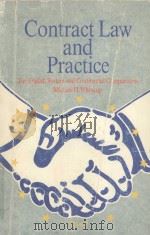
- CONTRACT LAW AND PRACTICE
- 1990 KLUWER LAW AND TAXATION PUBLISHERS
-
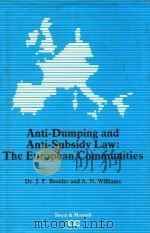
- ANTI-DUMPING AND ANTI-SUBSIDY LAW THE EUROPEAN COMMUNITIES
- 1986 SWEET & MAXWELL
-
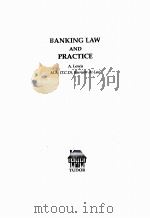
- Banking law and practice
- 1998 Tudor
提示:百度云已更名为百度网盘(百度盘),天翼云盘、微盘下载地址……暂未提供。➥ PDF文字可复制化或转WORD
